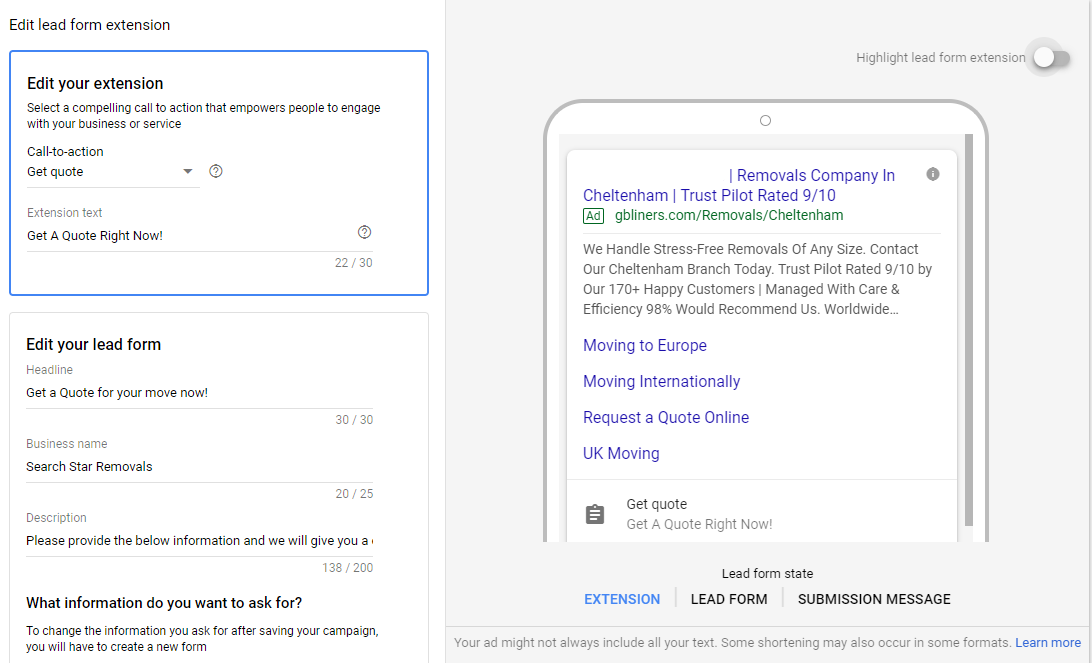Google is testing a new ad extension that lets advertisers capture leads directly from their text-based ad campaigns. Assuming it sees the light of day, this is an exciting development for lead generation businesses looking to reduce the number of steps between click and contact.
How Does the Lead Form Extension Work?
When faced with the lead form extension in their search results, users will be encouraged to click on a section of the ad containing a call-to-action. Once clicked, a form will appear requiring the user to enter key information in return for a call back, offer or reward.

Currently, Google’s lead form extension is limited to collecting name, email, phone number and postcode. The information submitted by users is stored within Google Ads, but can be exported using a webhook.
Why Should You Care?
Clearly, the exciting thing about this new extension type is the possibility to collect a higher number of leads more easily. It’s an incredibly frictionless lead-generation process.
However, with a lack of friction comes quality concerns. And we’d urge any advertisers using this extension to keep a close eye on the quality of the leads it’s generating. After all, every time a user submits their information via a form it will be counted as a lead conversion.
It’s also worth noting that Google has tried this sort of direct lead generation thing in the past. 2010’s short-lived contact form extension and 2011’s even shorter-lived cost-per-lead ad format spring to mind. But we’ll keep an open mind.
How to Use the Lead Form Extension
Beginning with the end in mind; the first step is to decide on a call to action. This will head your ad extension, so make sure it’s a compelling one. You then have 30 additional characters to convince the user to click.
Now it’s time to create the lead form itself. Here you have a wealth of options to tweak the form to your liking, including a 200-character description, along with the option to add your own image. As mentioned above, you can collect name, email, phone number and postcode data.

The final step is to leave the user with an on-brand message and follow-up action. This is a chance to drive the user to visit your site and get them engaged with your brand and business.
Alternatively, you can select ‘download’ as a call-to-action. Consider using this option to reward those who filled out your form with an information product, such as an infographic or e-book about something relevant and interesting.

Once a user fills out the form you have two options:
1. Information can be stored within Google Ads then downloaded by you, the advertiser. This is a tedious approach, which requires a lot of manual work plus exporting information into your own CRM.
2. The webhook approach involves linking Google Ads to your own CRM system. This is a lot of upfront work but then once it’s done, it’s done!
The first option is the default. If you want to use the webhook approach the below information is required.

Final Thoughts
The lead form extension is an exciting step towards merging the responsibilities of the search engine with those traditionally exclusive to websites.
Although this extension is relatively bare and basic, it presents an opportunity for lead generation-based companies to increase the leads they produce without any need to change their website or optimize their lead capture forms.
If you’d like to find out more about using Google’s lead form extension in your campaigns, or have any questions about Google Ads generally, please get in touch with the team today >>>